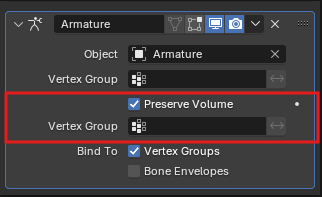Rigging nodes is a long way out still. We should improve Blender as much as possible now so that it is I’m a good state for when we make the switch. Armature deformation, being at the core of any rig, is too important to tolerate any performance loss.
I myself have never seen any use for this option except mixing linear/quaternion blending for the bones. This is a feature a certain other very popular software controls with its (vastly more difficult to use) version of weight painting.
I think we should make the breaking change for a few important reasons:
- I disagree that the problems mentioned in the first post are not problems for artists.
- we have many times as many users of blender who could benefit from faster, cleaner armature code
- one of the most oft-cited reasons for preferring other software, in my experience, is performance in heavy scenes with animated characters. While I think those people are mostly having the problem because they don’t know how to set viewport/render options… Let’s just try and make Blender faster so they can’t use that excuse anymore, and have to pivot to something even more niche.
- the rigging module should not cater to users who are scared of complexity and unwilling to A/B test. Tech art is Inherently complex, and the further we move in the direction of Everything Nodes, the less complexity is hidden from the user. This comes with the ability to group nodes, which hides the complexity without masking it altogether.
So I suggest:
- create a new GN node to handle armature deformation and a default GN group to fix up modifers that used the option in versioning.
- if that is too much trouble, break compatibility and put a detailed example workaround in the changelog
- in either case, add an option to blend linear/dual-quat skinning so that the main use-case can be restored in an easy, artist-friendly way. This may even be detected and fixed in version code.
Basically, it is worth it to take a small hit (minor break in compatibility that only affects a handful of users) to avoid a bigger hit (slower performance that affects almost every user and scares some away from Blender entirely).
And regarding rigging nodes: when it is ready, each node should do ONE thing and do it well! The current armature code does not do that, so it will lead to work when we port it over!
